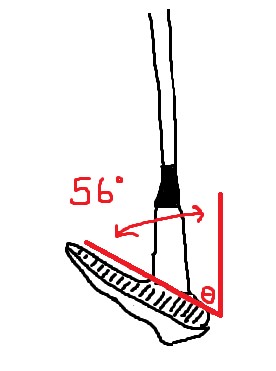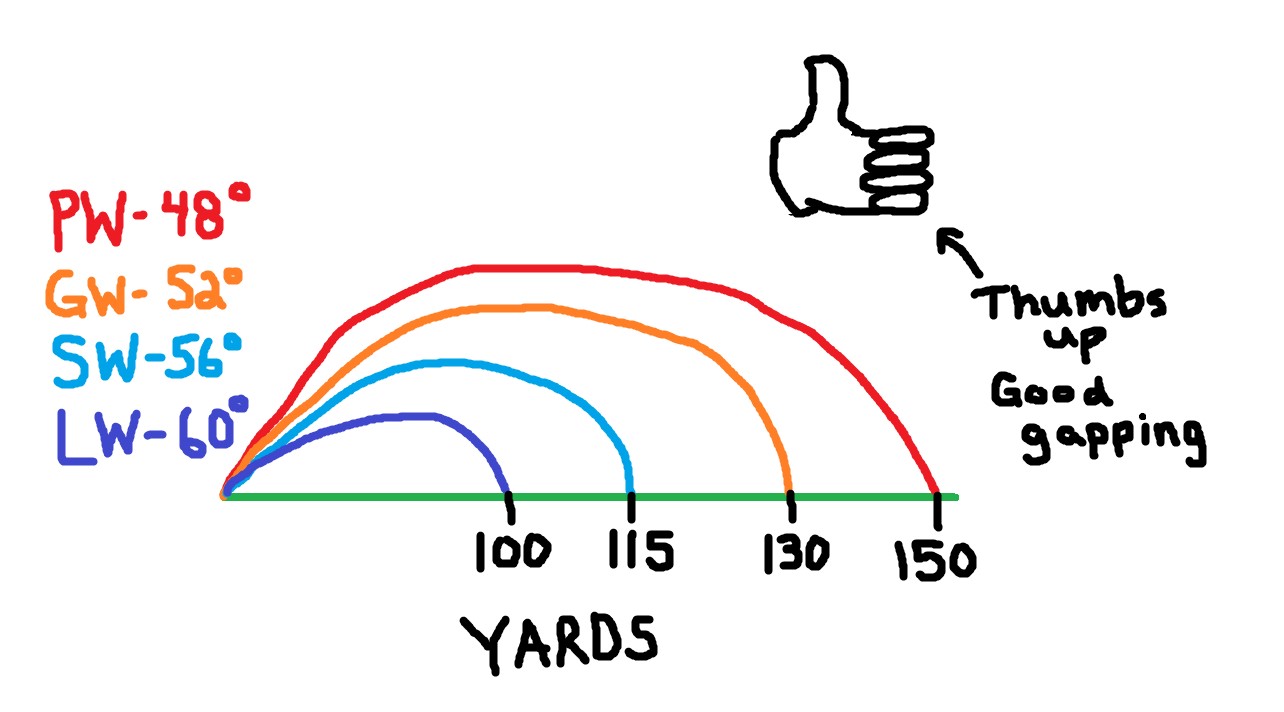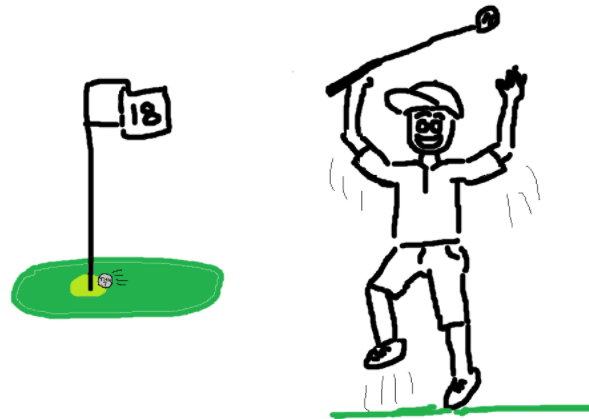Golf Wedges: loft, bounce, and grind guide
Posted by Colin on Oct 25, 2024
Wedge Loft, Bounce, & Grind
If you want to score well in golf, you need to be good around the green. And when it comes to strokes around the green, putting is going to have the most impact on overall score, but chipping and other wedge shots are a strong second. This blog is about the second place clubs, the oft overlooked high arc clubs, the clubs that turn slumdogs into millionaires, joes into pros, and zeroes into heroes. When you have a terrific wedge game, it can make up for a multitude of weaknesses in other parts of the game and it can make playing partners ‘think’ you know what you’re doing. The only problem is that the difference between others ‘thinking’ you know what you’re doing, and you actually ‘knowing’, can be a pretty wide chasm. There are a million things to know and take into account when talking about wedge play; the type of grass you are hitting from, the type of grass you are hitting in to, the angle those grasses are laying, the coarseness of the sand you’re hitting out of, is there dew on the ground, are you hitting into a slope or down one, do you need to hit a high shot that has to stop, do you need to hit a high shot that needs to release? What kind of shot are you hitting; are you bump’-‘n’-runnin’, floppin’, nippin’, chippin’, or pitchin’? While it would be interesting to write about everything to consider on every wedge shot, my computer doesn’t have the ink for that. This blog is going to stick to just the equipment, namely the loft, bounce, and grind. And get ready for a whole lot of amateur sketches because that’s what we’re doing today.

Loft
This is the easiest to explain and the one most golfers already know. The loft is the angle of the club face relative to vertical. Visual learners can refer to the amateur sketch.

Basically, the higher the loft is, the higher the trajectory of the shot. A pitching wedge typically has a loft between 44 and 48 degrees, while a lob wedge typically has a loft between 58 and 62. A pitching wedge shot may go higher than a lob wedge at its apex, but a lob wedge can reach it’s apex in a much shorter distance.

The way to choose the lofts for your game is simple, you want to be able to cover the most amount of distance without having large gaps. I think this part is easier to see visually, so lets get back to some amateur sketches. *Not to scale*


The first sketch shows an ideal situation, there is four degrees of loft separation between all of the wedges and each wedge has about 15 yards of separation between the other wedges. The second sketch shows what you should probably try to avoid; the loft difference between the gap wedge and the sand wedge is only two degrees so the difference in yardage between the two clubs is only a couple of yards, whereas the loft separation between the pitching wedge and gap wedge, and sand wedge and lob wedge is six degrees which leads to about fourty yards of difference between those clubs. It leaves you in a tricky situation if you find yourself 85 or 130 yards from the green, because you are then relying on the feel of a 75% swing.
Bounce
The bounce is also easy to visualize but how it works may not be clear to everyone. The bounce is just the angle between the leading edge of the wedge and the lowest point on the sole. Visual learners can refer to my amateur sketch below. Now that we know what it is, how does it work? Well, the more bounce a club has, the less likely it is that the club will dig into the ground. That seems like a good thing, why not get all wedges with the most bounce available and never chunk a ball ever again? If the turf conditions are hard, the club is just going to skip (or bounce) off the ground, and the more bounce your club has, the more likely that will occur leading to you blading the ball. With that in mind, the amount of bounce on your wedges should be determined by the conditions you frequently play in. Lower bounce is recommended for firmer conditions whereas higher bounce is recommended for softer conditions. That’s painting with broad strokes though because there is another factor that should be considered, which is how steep your swing is; if you have a steeper swing you should lean towards having more bounce as it will give you a greater margin for error. A shallower swing would benefit more from having less bounce. Generally speaking, golfers don’t change wedges just based on condition because once you get comfortable with a wedge, comfort trumps optimization. So get yourself an optimal amount of bounce for your swing and home course conditions and stick with that.

Grind
The origin of wedge grinds can be traced to the legend Bob Vokey. The idea of incorporating grinds to the sole further optimizes wedges for course conditions and swing characteristics. The concept is relatively simple, it is just referring to the pattern of what has been taken from the sole by grinding it away. If the leading edge is ground away, it allows the club to cut through thick rough. If the trailing edge is ground, it allows the club to slide easier over turf to maintain clubhead speed. Visual learners can refer to my amateur sketch below of Vokey wedge grinds, past and present. (The red is what has been ground away, the lighter shade of red is also ground down but only slightly). Now that we've kinda grasped the concept, it's time to explore how it functions so we can apply it to our game and make the most of it. So here is a breakdown of each of the grinds straight from Vokey:

Conclusion
Being able to scramble and save shots with good wedge play is skill that shouldn’t be overlooked if you want to improve your golf scores. You never want to miss the green on an approach shot, but if you do find yourself in that situation, there is no better feeling than your next shot being a chip-in for birdie. Now that you know everything you need to know about the equipment, you can chase that high and get lower scores.








